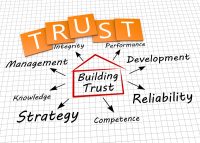Category: Learning & Development
Employees are valuing career development more than ever—it’s a sign that the company is willing to invest in their future. How are businesses approaching training today? What are their pain points, and what topics are being addressed in training?
High property taxes, student loan debt, and stagnant wages are causing many workers to be more selective in where they live and work. Because of this, many employers are missing out on top talent as more workers are choosing quality of life over working for big name brands in expensive cities.
The multigenerational workplace is here. By 2020, most organizations will have at least four different generations working alongside each other.
The Championing Apprenticeships for New Careers and Employees (CHANCE) in Tech Act—or H.R. 3174—was reintroduced via bipartisan efforts this year after originally being introduced in 2017. Here are two things you need to know about it if you’re a learning and development (L&D) or an HR professional.
Did you know that, according to research and data, 58% of people claim they trust strangers more than their bosses and that 58% of managers claim they never received any form of training to be managers or to help them be better managers?
Training has become an integral part of attracting and retaining top talent, yet employers across the country are coming up short in their employee training programs.
Whether you develop specific professional certificates and programs yourself or rely on reputable third parties, here are four you’ll want to make sure your employees have access to in 2019.
Whether or not you’re ready for it, digital technology is transforming workplaces and learning and development (L&D) departments worldwide at an accelerated pace.
In a previous post, we referred to a principle of psychology often cited in the business realm, particularly among operations and customer relations functions.
Imagine two scenarios involving employees on your team:
At one point or another, most of us have probably felt burned out.













